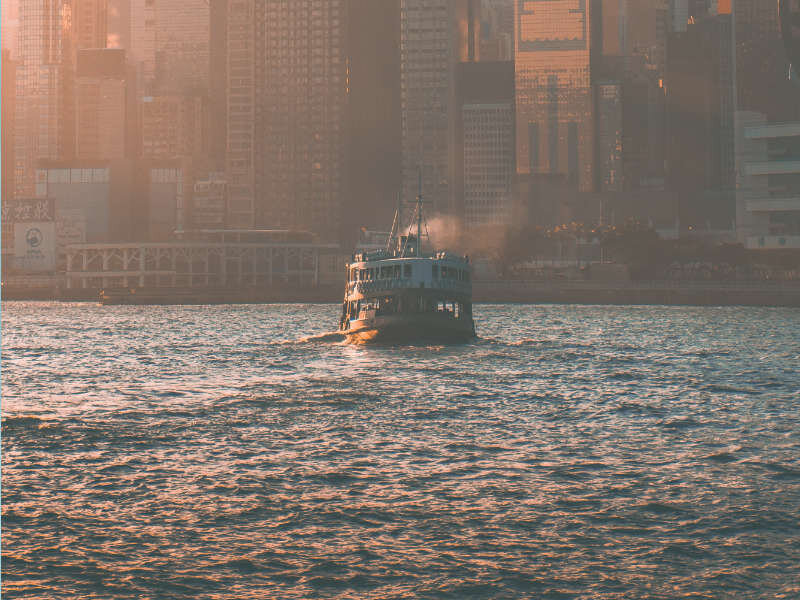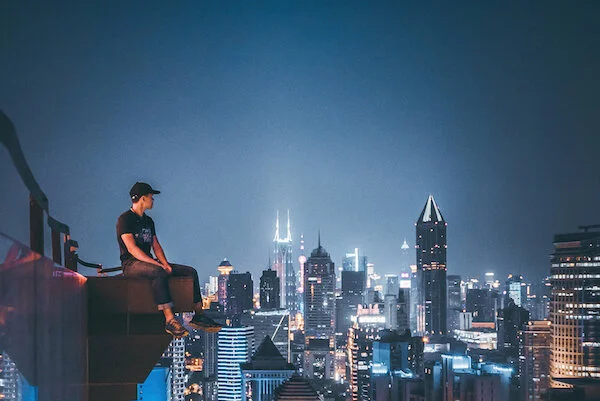
Ryan moved to the United States from Guangzhou, China, at the age of twelve. Ryan received his Master of Divinity at Gordon-Conwell Theological Seminary and is currently serving as an Assistant Pastor at New City Presbyterian Church in his US hometown of Cincinnati, OH. He also serves as the China Partnership Translation Manager.

Never miss a story
“Father, we thank you for caring for Hong Kong. Thank you for the churches and for your children you have gathered here. We especially thank you that, since 1949, this city has been a refuge for the churches of China. We thank you for the saints who have passed away who rest in this city. We pray for the surging crowds of lost souls on the streets of Hong Kong. They have heard the gospel, rejected it, and march toward death.
Father, you have blessed the family churches of China through Hong Kong. You allowed us to use this city as a refuge during the past years, and we have had many gatherings here and experienced many blessings. Some of us live and serve in the same communities in mainland China, but in Hong Kong, we have met for the first time. Lord, thank you. We ask that through this city and through our gathering here your gospel would bless each city in mainland China, and your churches would be revived. We ask this in Jesus’ name. Amen.”
Pastor Wang Yi, 2014
In a recent meal with a group of church friends, we shared what is the most beautiful place we have visited in our lives. Pictures of Yellowstone National Park, Sicily, Prague, and the New England coastline flashed through my mind, but one image that returned over and over to me was the city of Hong Kong. The city’s skyline before a backdrop of green mountains as the sun sets over the water of the Pacific Ocean is hard to beat. I grew up in a southern Chinese city named Guangzhou, roughly two hours north of Hong Kong by train. We speak the same dialect, we sing the same pop songs, and we watch the same shows. I’m accustomed to calling Hong Kong my second home.
Hong Kong is a small city packed with different sceneries, people groups, and cultures. It’s a place of fascination for me because it is the first lens through which I saw Western cultures, and yet it is also through Hong Kong where I caught a glimpse of what the best of Chinese culture can be. But one childhood memory adds to my fascination with Hong Kong. Very often in the middle of the 6:30 evening news from Hong Kong, our TV would suddenly switch to a color screen for five to ten minutes, and then everything would return to normal. Or during a special news report, our television would show scenes of birds flying over nature instead of the actual news report. My parents would react by saying, “Ahh, they are talking about something that we can’t hear again.” My 10-year-old brain didn’t understand why certain things could be considered off limits for those of us living in China, but that was my first experience of censorship.
As I immigrated to the United States and became familiar with the variety of political opinions and worldviews, I became more aware of the danger of censorship. What the audience is deprived of is not simply information on certain sensitive topics, but they are stripped of entire categories of vocabulary with which to process information. In other words, what people are denied is not just access to new information, but they are also deprived of different frameworks with which they can make sense of the information that they already have.
An Intersection of East and West

This is what makes Hong Kong such a fascinating place. It is an intersection of eastern and western ideas and cultures. The ninety nine years that Hong Kong was under British rule – commonly regarded as a source of shame by the people of China – gave the people in Hong Kong access to ideas and worldviews that most people in mainland China did not have. But this is also what has made Hong Kong such a dangerous place in recent decades in the eyes of the Chinese government. Under the agreement of “One Nation, Two Systems,” Hong Kong is given a degree of autonomy and freedom that the people in China do not have. As travel between the mainland and Hong Kong became much easier in the early 2000s, it not only promoted a greater exchange of commercial goods but also a greater exchange of ideas. The people – and house churches – from China suddenly had access to knowledge that they did not possess before. As Pastor Wang Yi said in his prayer, Hong Kong became a refuge for the churches in China, in which mainland Chinese pastors and believers could meet and gather together for training and prayer.
All of this did not go unnoticed by the central Chinese government. Since its return to China in 1997, Hong Kong has noticed a gradual erosion of its freedom and autonomy under the rule of the Chinese government. The Extradition Bill was another big step in this unwelcomed trend, but even without the bill, this erosion seems to be an irreversible process that the people of Hong Kong have to reckon with. That could be a large part of why protests and unrest have not died down after the withdrawal of this bill. The people – especially the young people – fear that Hong Kong overtime will just become another Chinese city: they will have their access to social media limited, their actions will be monitored, their news outlets censored.
Over the last four months we have already seen that the protests and unrest are depicted very differently by various news outlets. There are worries that news stations and newspapers are beginning to take sides. There is a spin to everything. The conflict is not just between the people in Hong Kong and the Central Government in Beijing; the conflict is also among different factions of Hong Kong society, each holding to their own position and struggling to acknowledge the veracity and concerns of the other side. In a sense, censorship is already happening in Hong Kong, but it is a form of self-censorship because the various sides tend to see and interpret events in a way that supports their own positions. When the factions at play dig deeper and deeper into their own ideological position, the possibility for a political compromise and peaceful resolution becomes less and less likely.
What Should the Church Do?

In such divisive times, the churches in Hong Kong have faced questions about their social, political, and moral responsibilities from within and without, and from these questions have come pressures from all sides. Some accuse the Christian leaders in Hong Kong of being advocates of violence because protests and rallies are often preceded by prayer gatherings. Some accuse Christians of obstructing justice because they place their bodies between the police and the protestors. Some accuse the church and church schools as vehicles of Western ideology. Some call on the church to condemn the violence and stop harboring protestors. Some call on the church to protest against the government because churches should speak out for the oppressed and they also stand to lose in the erosion of their freedom. One thing is clear: different factions either see the Christian churches as allies or as enemies; they either seek to solicit the churches’ support or to ensure the churches do not make things more complicated. Facing pressure from within and without, some church leaders struggle to come up with the best way to move forward.
The churches in Hong Kong are facing an unprecedented test, and it is becoming harder to discern how they are called to be a blessing to the city. But it is in this unprecedented time that the churches can stand up to point people to the gospel. Perhaps the way forward is not to please different sides of society or to form an alliance with the right faction. The way forward may lie in protecting the distinctiveness of being the church of Christ, and as such, being the scaffold of the heavenly Kingdom of God that is to come on earth.
The Church as a Witness to Another Kingdom

The church holds the best perspective to see all the events through the lens of eternity. This perspective is revealed from God through the scriptures and it cannot be censored. While public opinions can be swayed like a tree by the breeze of news reports, Christians know where their eternal destiny lies: in a Kingdom that cannot be shaken rather than in the kingdoms of man. The church must hold a steady course to preach the Kingdom of God, both in season and out of season. It is only when finding rest in our true hope that men cease raging.
With the proclamation of the Truth, the churches should also tell the truth. Because our hope is in a heavenly King, we do not have to take sides to promote the success of an earthly king. Christians do not have to bend the truth to support or denigrate any factions of society. If different sides are only interested in a partial narrative that supports their own ideological position, the church’s calling is to seek to shed light on the full narrative. Whether it is pointing out the mistreatment of police officers or the violence against protesters, the church is a defender of truths, and as such, it should call out any injustice that is done to anyone.
Lastly, as the scaffold of the Kingdom and defender of truth, the church can be an agent of love and peace. Now entering the sixth month of protest and unrest, peace seems like a distant memory and a fanciful dream. With the fabric of Hong Kong society devolving into factions, it is almost impossible to get anyone to listen to each other, not to mention love each other. But Christians bear the calling to love our neighbors as ourselves, including our enemies. That neighbor could be a protester or a police officer, black shirt or white shirt, blue ribbon or yellow ribbon. The door of the church is open to all who seek refuge within because Christ has broken down the dividing wall of hostility.
Ultimately, the church in Hong Kong can show the very real hope they have in Christ by living as people who are truly free (1 Peter 2:16). It is right and just for churches to speak out against unjust laws and defend freedom, but they will never have to do it from a place of desperation. They can perhaps learn from their brothers and sisters in the mainland, and from Pastor Wang Yi, who is now in prison for his faithfulness to the gospel. Even though individual rights can be violated and religious freedom can be limited, the church of Christ cannot be bound. The proclamation of the gospel may sound more distinct in the face of suffering because light shines brighter in the darkness. And yet in the darkness, our brothers and sisters in China have not ceased to pray for the people who oppress them, share the gospel with the officials who arrest them, and love the neighbors who report on them. We give thanks to God for preserving the churches in Hong Kong over the last hundred years and for two decades of relative peace and freedom under Hong Kong’s autonomous status. The future of Hong Kong is uncertain, but it is clear that more unrest and violence will follow. But in the midst of all the rubble, may the scaffold of the Kingdom of God rise up to build a better city.
































